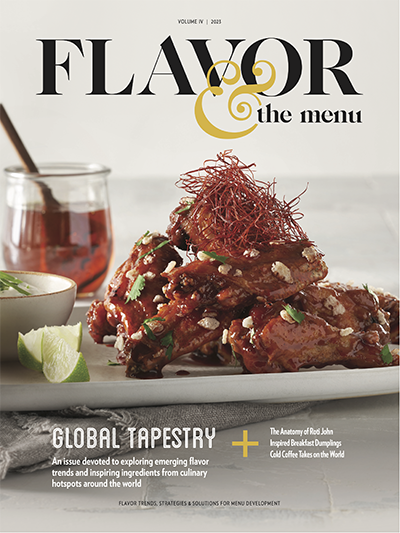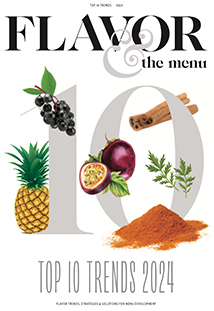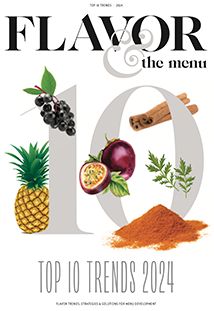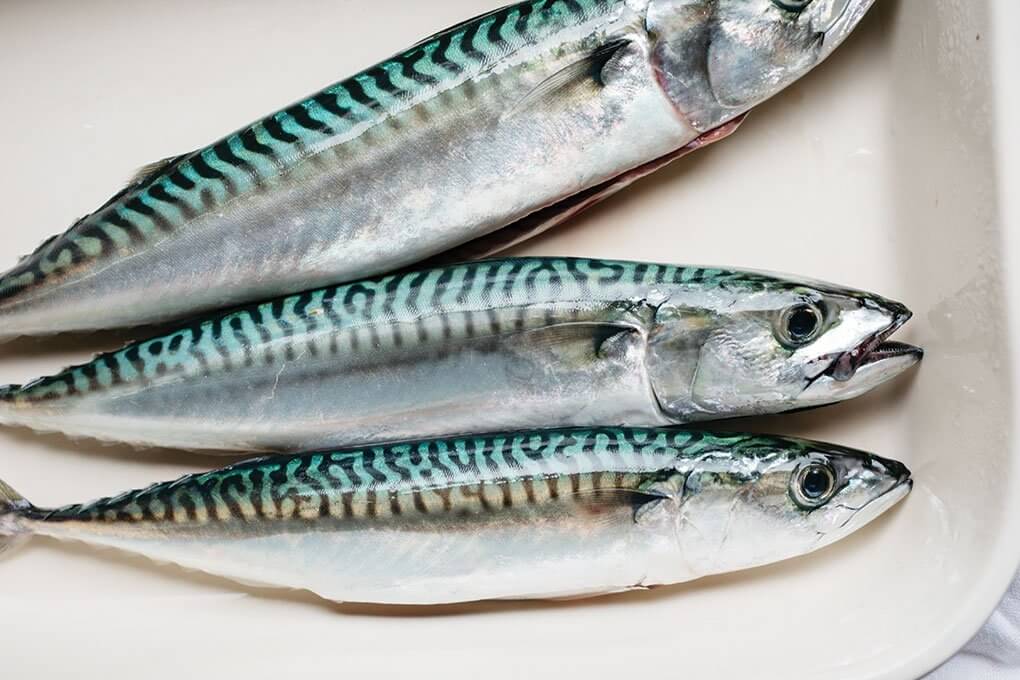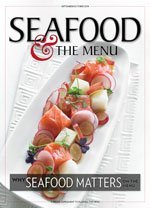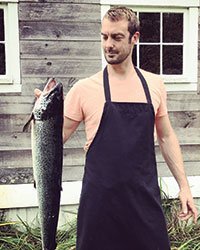
Barton Seaver, Contributing Editor
On the eve of National Seafood Month (October), we are pleased to present Flavor & The Menu readers with this inaugural issue of Seafood & The Menu magazine, a publication whose sole objective is to elevate the conversation about seafood in every professional kitchen in America.
Growing up on the Chesapeake Bay, I was one of those little boys whose attention, once trained on a tidal pool, was not to be diverted without a fight. My curiosity always centered on what things tasted like, what delicious discoveries might be underfoot. As a professional cook, I dedicated many years on the line learning the art of all things seafood because it is my passion. That passion led me down other paths related to seafood as well.
After more than a decade in restaurant kitchens, I became very active in the environmental community, working to advance understanding of sustainable seafood and how we, as both chefs and consumers, have a responsibility to care for the environment from which our food comes. I’ve also spent many years working in the realm of public health. In that role I have strived to understand and communicate how the seafood choices we make at meal times intimately affect both our own health and that of this large, and mostly blue, planet.
After more than two decades working with all things scaled, salty and shelled, I now view myself as a seafood evangelist. My mission is to get more Americans eating more seafood more often across all demographics.
That might strike you as a bit odd: someone who’s spent their career working to sustain oceans now pushing every eater in America to radically increase their seafood consumption. But I am not straying from the path that led me to sustainable seafood. My concern about, and commitment to, the environment is as strong as it’s ever been. But to achieve resilient ecosystems, I now view seafood as one of the best tools we have at our disposal to drive our food system into a resilient future.
And here’s why:
Seafood as a center-plate ingredient gives all other animal proteins a high bar to match in terms of sustainability. All too often, we assess seafood sustainability solely based on the environmental toll it takes to make its way into our kitchen. The information about the myriad ways seafood is produced can make that assessment complicated. But we don’t often assess seafood as a protein relative to other center-of-the-plate options.
Americans consume roughly 15 lbs. of seafood per person per year. We eat land animal proteins—beef, pork and chicken—at a rate that adds up to nearly 200 lbs. annually. When seafood is measured against every one of these land animal proteins across five sustainability metrics—freshwater use, greenhouse gas emissions, antibiotic use, land-use alteration and feed conversion ratio—time and again it proves itself to be the more sustainable of the animal proteins a chef can serve. Placing more seafood on our menus can better balance the scale of what we can offer to our customers and what the planet can best provide.
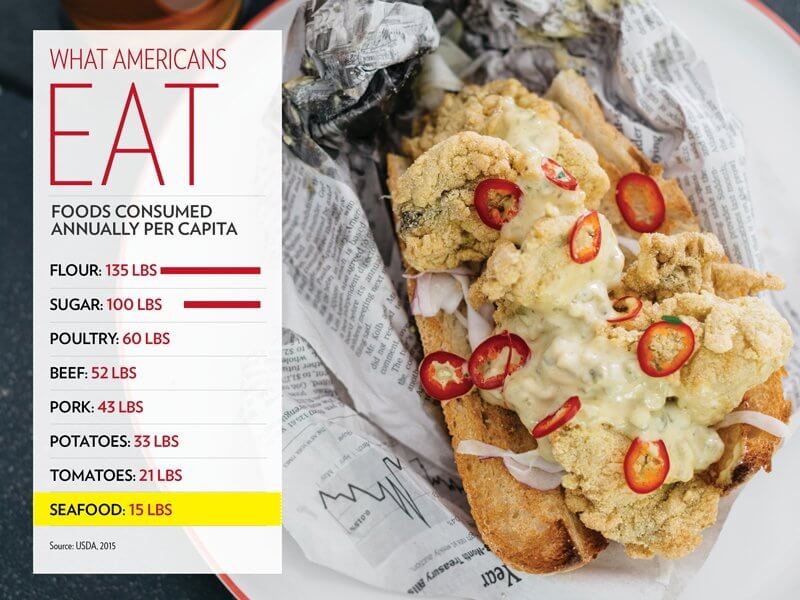
While seafood currently does not hold a lion’s share of either the center-of-the-plate or the national food economy, America’s seafood traditions are a fish tale hard to exaggerate. For hundreds of years before pilgrims set foot on Plymouth Rock, Europeans sailed to these shores to fish. This nation was literally founded on cod. It was the men and women who worked this nation’s first fishery that laid the economic cornerstones upon which our country’s wealth and political freedoms were built.
For hundreds of years since, in New England cities like Gloucester, Mass., in coastal towns dotting the Chesapeake Bay, in enclaves hidden in the sultry bayous of the Gulf, and in settlements all along the Pacific Coast from Southern California north to Alaska, we find communities that have carried on as their forebearers did, as hard-working, independently spirited, small business-owning men and women.
We, as chefs, have an incredible opportunity to support these traditions, both sustaining the legacy of wild fisheries and encouraging growth in responsible aquaculture operations. This is a story that every chef should be telling to a captive audience, as nearly 70 percent of the seafood consumed in America is eaten in restaurants.
Seafood offers chefs a powerful tool to deliver on our responsibility to sustain our guests. Increasingly in the 21st century, chefs are expected to lead conversations about what food means within our communities and across individual lives. When it comes to sustaining our guests with healthful and delicious foods, it is paramount that we encourage increased seafood consumption. There are great resources such as SeafoodNutrition.org to help chefs better understand the health impacts of eating seafood. As a colleague of mine likes to say, “The three S’s of public health are: Wear your seatbelt, don’t smoke, and eat seafood.”
Seafood & The Menu gives chefs succinct information about seafood that is relevant to their everyday decision-making processes. Within these pages, readers will find focused seafood trend pieces, useful seafood sourcing and selling tools, updates on technologies that are improving the quality of seafood available to chefs, and online, a forum to share questions, comments and concerns about seafood. Collectively, this content gives chefs what they need to know in order to move the needle on seafood consumption in their restaurants. Seafood & The Menu will help chefs make sense of seafood in the modern kitchen.
Organizations like the James Beard Foundation, Chefs Collaborative, the American Culinary Federation and the National Restaurant Association have all developed programs to help chefs and restaurateurs navigate the growing body of information about seafood. But the complexities of the marketplace remain. Sustainability assessments have at times been confusing due to conflicting information, disparate goals and lingering myths (see Seafood Myths Debunked).
Seafood is the most globally traded commodity, so determining provenance is difficult. Our staffs, both front and back of house, often lack familiarity with species beyond the regulars: shrimp, salmon, tuna and cod. So the dizzying array of seafood products can be intimidating. Seafood is often thought to be more expensive than other animal proteins. And further, its high perishability carries added worry about food waste and higher food cost. So I can’t really be too hard on the chef if she or he decides it’s just easier to not serve seafood.
But the tide is turning. Over the last few years, in the wake of seafood sustainability campaigns, more interest in local and underutilized species and improvements in the seafood supply chain has made seafood a top trending ingredient (see Consumer Trends).
Remember when the farm-to-table trend was just starting to take off? Just 15 years later, we now enjoy a clear industry understanding that when we menu heirloom tomatoes or heritage breeds of pork, we’re supporting something bigger than just the one farm where those products were raised. We’re contributing to a whole system based on tradition, sustainability and superior taste. We’ve done the hard work to train our guests to trust us to guide them to a more sustainable food system. Now it’s time to build on that foundation and lead our guests on a path of seafood sustainability and discovery.
In America, more than 90 percent of the seafood that we eat comes from just 10 species. In my most recent book American Seafood (Sterling Epicure, New York, 2017), I tell the tales of more than 500 unique species of seafood caught in America’s waters. And the diversity is not confined to our shores: The ocean of culinary experience that awaits our attention spans worldwide. As someone who has tasted many, many species, I’ve yet to meet anything salty, scaled or shelled that wasn’t worth appreciating.
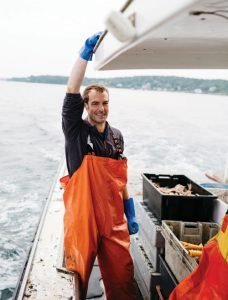
In discovering new/old species like dogfish in New England, we’ll simultaneously learn a little bit more about the culinary and social history of this nation. While dogfish has always suffered our disdain, it now offers a channel marker leading us from what we’ve lost—once mighty cod fisheries now depleted—to our present-day waters teeming with an unprecedented abundance of a fish that we chefs have not yet asked fishermen to catch for our tables.
For a Southern example, look to how a traditional farming ethic has partnered with aquaculture technology to create an evolved industry producing what is in my opinion a “grand-cru” version of the oft-dismissed-as-pedestrian catfish. Through careful stewardship and hard-learned best practices, the United States now farms a catfish product of exceptional quality and wholesomeness.
Discovery is not limited to species. It also encompasses chefs revisiting our long-held taboo against frozen seafood. New technology can capture fish at the peak of its flavor without damaging the texture of the fillet (see Port to Plate via Fresh Frozen). Innovation doesn’t stop at how the seafood gets into our kitchens. We can also witness our colleagues leading the seafood charge by using it across dayparts and menu sections.
With this first issue of Seafood & The Menu, we also issue an invitation to you to share your seafood challenges, best practices, questions and comments, so that those elements can shape future content within these pages and in our online features.
Exploring seafood is a unique journey for every chef. We each need to accept our responsibility to serve sustainable seafood, explore the heritage of seafood in the communities in which we live, and cater to the tastes of our customers. To take full advantage of this opportunity, we must push ourselves as culinarians and wade deep into an abundant ocean of delicious ingredients.
Mark my words, the meat of the matter is soon to be a fillet.

